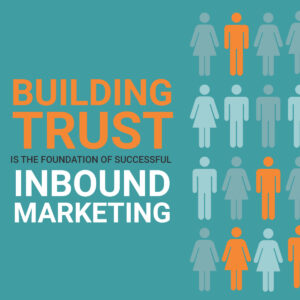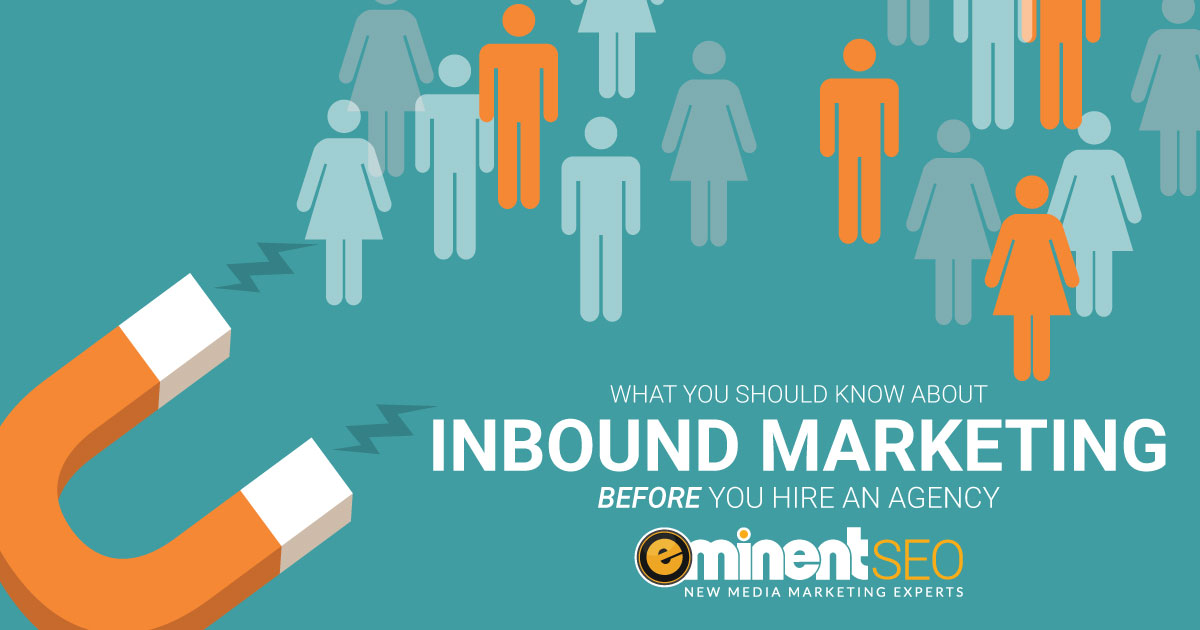Inbound marketing has been hailed as one of the most successful types of marketing strategies, boasting such enticing benefits as:
- Stronger customer loyalty
- Higher sales conversions
- More repeat customers
- Trackable marketing ROI
In the information age, inbound marketing is seen as a smarter, more modern way of marketing, as opposed to mass-market advertising that tends to focus more on brand-building than satisfying prospects’ needs.
What Is Inbound Marketing?
Also called permission marketing, inbound marketing gets its name from the fundamental idea it’s based on: attracting customers by enticing them inward with valuable information, and getting their permission to communicate with them.
This is the opposite approach of traditional mass media-based outbound marketing, in which the goal is to bombard potential customers with marketing messages in the hopes that a few will be interested.
Inbound marketing is often used synonymously with content marketing because inbound marketing uses content to build and nurture relationships with prospects and customers on channels such as:
- Blogs
- Social media
- Optimized websites and landing pages
Because of its focus on attracting customers and building a relationship with them, inbound marketing is a more targeted, precise type of marketing. Choosing the right audience and communicating to them in the right way can yield substantially higher 1) conversion rates, 2) repeat customers and 3) customer loyalty. However, this is also what makes inbound marketing more difficult to succeed at than outbound marketing.
How to Do Inbound Marketing Successfully
Marketing is based on a naturally self-serving motivation: The company wants to sell its products and services to people. There’s nothing wrong with this, per se. Sales are a necessary part of the business cycle, and good marketing can help match up customers with things they truly need. But it’s easy for marketers and salespeople to go overboard in their attempts to get leads and sales.
No one likes to be sold to. But everyone likes to buy things they want and need. What’s the difference?
When a company offers you exactly what you want or need at the moment you need it, at the right price, you’re happy to spend your money. In this case, it doesn’t feel like you’re being sold to, it feels like you’re being helped.
“Being sold to” is that yucky feeling you get when someone is pushing something on you that you don’t want or need (at least not right now). We’ve all encountered overly aggressive salespeople, annoyingly persistent pop-up ads, and intrusive emails we never remember signing up for.
For customers, what’s so enticing about successfully implemented inbound marketing campaigns is that they feel like the company is helping them – even though, in actuality, they are being sold to. Inbound marketing is based on the idea that customers should be sold to how they want to be sold to, not just how the company wants to sell to them.
For companies, inbound marketing done right means that their marketing efforts are garnering a higher ROI and providing a steady stream of leads and customers.
However, the business world is littered with marketers who attempt inbound marketing, but are really just doing outbound marketing disguised as inbound marketing.
Let’s look at the key factors you need to be aware of to do inbound marketing right.
The All-Important Trust Factor

Ask first how you can help.
Be of service.
Those who are the most successful in marketing, sales, networking and leadership understand that the most powerful way to build influence and get what you want is to first be of service to others.
These leaders don’t just sell people their product, service or idea. They build relationships with people and create a sense of community and social belonging.
There are two ways that human beings interact:
- Transactional – In a transactional relationship, each party is simply trying to get something from the other.
- Relational – In a relational relationship, the relationship is more important than the transaction.
Inbound marketing is based on the principle of relational marketing, in which the relationship with the customer is more important than any individual transaction.
The company begins by giving the prospect helpful information for free, and asking for the prospect’s permission to communicate with them directly (usually via email). From there, the company continues to provide timely and helpful information and resources in order to build the relationship with the prospect over time, with the goal of eventually winning their trust – and the sale.
Because inbound marketing is a customer-centric, permission-based relational model, building trust with prospects and customers is the most important goal.
However, any practical marketer must ask questions such as:
- How much can I really afford to give away for free?
- How long will it take to build the relationship with the customer until they buy?
- What if they never buy?
Investing the Right Amount of Time and Resources
Because inbound marketing is based on building relationships, it is a long-term nurturing strategy.
As a marketer, it’s important to make sure you have a long-term plan and can dedicate the resources to give it time to work.
It’s like planting a seed. You must:
- Plant the right seed,
- Plant it in fertile soil,
- Water it appropriately,
- And wait.
Unlike with plants, we often don’t know the exact germination period of a marketing campaign, so marketers and business owners are always making their best guess as to how much time and resources to dedicate to a campaign.
You want to give to a campaign enough time to be successful, but you don’t want to keep investing in a plant that is a dud either.
This is why it can be a good idea to have multiple campaigns running at once, in case some don’t pan out. But, you don’t want to have so many that you can’t do all of them well, either.
Targeting the Right Audience and Message
A critical factor to the success of inbound marketing campaigns, and the marketing strategy as a whole, is ensuring that you’ve matched the right audience with the right message.
One of the biggest mistakes that new inbound marketers make is making assumptions about who their ideal audience is and how to communicate to them. This is an area that requires research and experimentation in order to get it right and achieve the impressive conversion rates and customer loyalty that you’ve heard so much about.
Even when you know your ideal audience, it’s essential to make sure you are communicating to them how they want to be communicated with (as opposed to how you want to communicate to them).
Why You Can’t Afford NOT to Invest in Inbound Marketing
In many ways, outbound mass-marketing is much easier than inbound marketing. All you need is a big budget, and you can blanket the airwaves (or internet) with your message. You can focus on the transaction instead of taking the time to build a relationship.
But in an age where technology is making people feel more disconnected than ever, they are craving relationships more than ever.
Customers seek out companies they can be loyal to, because when they have their trusted providers, they can ignore the overload of marketing messages coming from other sources.
Yes, it takes skill to be a permission marketer. But in an age where everything is moving towards personalization, can you afford to be left behind?
What to Know Before Hiring an Inbound Marketing Agency
The No. 1 thing you need to know about hiring a marketing agency to handle your inbound marketing actually has nothing to do with the agency and everything to do with you:
You must give inbound marketing adequate time to work.
Many companies hire agencies in the hope of a quick ROI on their marketing dollars. While this might be possible with other types of marketing, it’s not possible with inbound marketing. Wise professionals create inbound marketing plans that are 18 months and longer.
You also need to make sure that your agency actually understands how to do inbound marketing well. Some agencies specialize more in outbound marketing.
Make sure your agency knows how to:
- Help you identify the right messages for each audience segment
- Build relationships and trust with customers over time
- Tracks marketing metrics that actually matter in relational marketing
- Can integrate inbound marketing with traditional marketing strategies where appropriate
While inbound marketing does require a substantial investment up front, it pays off big in the long term. Don’t waste any more time – get started right away!
If you’re ready to partner with an experienced inbound marketing agency, contact Eminent SEO now.
Need to turn your marketing budget into leads quickly? Download our free guide on boosting sales through a strategic PPC campaign:
Get My Free eBook



